When we think of trees, we think of a thick brown trunk and green foliage. But, trees come in all sorts of shapes and sizes.
One of the most striking trees stands to be trees with white bark. These unique trees are not only eye-catching but many are also considered to be astoundingly strong.
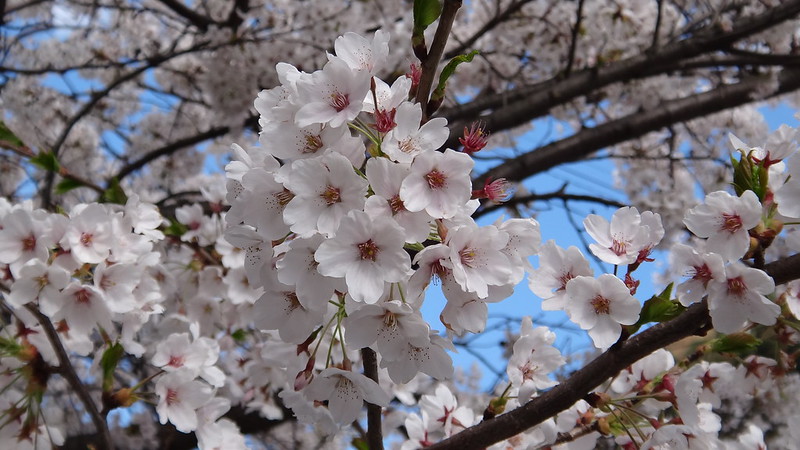
White trees seem to have a fairy-tale quality about them presenting an elegance that is unmatched.
This post will share some of the most amazing types of white trees out in the world.
1. White Poplar
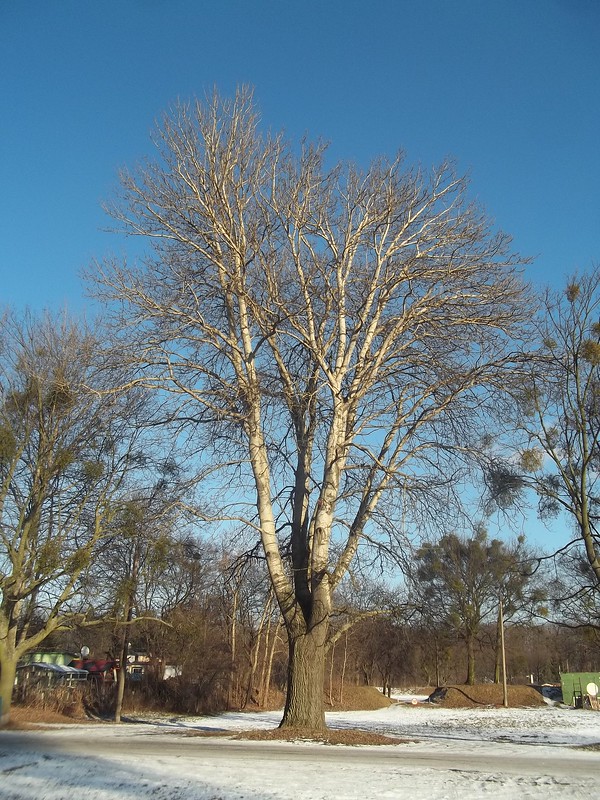
The White Poplar, scientifically known as Populus alba is a beautiful species of poplar that is also commonly known as the silver leaf or silver poplar.
Its name comes from its unique and distinctive green-gray leaves with a white-silver underside that appears to shine in the light.
The leaf’s silver appearance is created by a layer of thin white woolly hairs that coat the leaf.
Not only do their leaves appear white from the back, but the white poplar also produces unique cotton-like fruit.
The tree also consists of a white-gray bark that features distinctive diamond-shaped marks or deep fissures for older trees.
Though widely cultivated, the white poplar is native to Morocco but can be found in several parts of the world, most frequently in Central Europe.
2. Spinning Gum
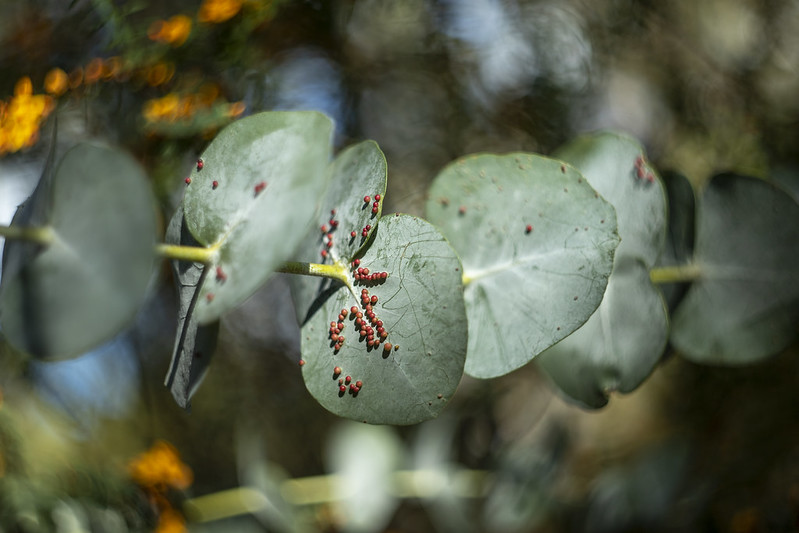
The spinning gum tree, scientifically known as the Eucalyptus perriniana is characterized as an evergreen tree and is native to Australia.
It is commonly grown as an ornamental plant for its unique and attractive gray-green bark, and it is considered to be a considerably manageable shrub to maintain.
It is also recognized for its unique fragrance produced by its white, cream flowers and foliage which are frequently used for cosmetic purposes.
The spinning gum is also widely cultivated for its rare and elegant sickle-shaped, pastel green-blue leaves which are much admired by florists across the world.
3. Brittle Gum

The brittle gum, scientifically known as Eucalyptus mannifera is recognized for its distinctive white smooth, chalk-like bark.
The brittle gum is native to Australia and is widespread across the country, recognized for its aromatic flowers.
The brittle gum can most commonly be found growing in areas of rocky and shallow soil.
The brittle gum is considered to be a significantly hardy species as it effectively withstands extreme conditions of frost and drought.
4. Ghost Gum

Ghost gum scientifically known as Corymbia aparrerinja is a native tree of Australia. It is recognized for its striking appearance that features a slender, smooth white bark.
Though elegant in appearance, the ghost gum tree, like the brittle and spinning gum, is extremely hardy as it consists of a lignotuber (thick trunk). This protects the plant from the environmental stress it experiences in Australia.
The ghost gum gets its name from its distinctive brilliant bark that is known to glow in the dark.
During the summer months, it’s not only the bark of the tree that is white but also its flowers as it produces elegant white flowers.
5. American Sycamore

The American Sycamore tree is recognized by its brilliant trunk.
The bark of the tree consists of gray-white textured flakes that peel away as a result of the growing trunk stretching and splitting.
The texture of the bark essentially marks the process of the growing tree in ways that other trees don’t.
Growing up to 40 meters, the American sycamore can reach extraordinary heights.
Scientifically known as Platanus occidentalis, the American sycamore is also known as the American planetree as it is a species of Platanus that is native to the US.
It can commonly be found in mountainous regions and wide plains.
6. Whitebark Pine

The whitebark pine is characterized as a conifer tree that is native to the United States. This magnificent tree can be distinguished from other pine trees by its unique white bark.
The whitebark pine can commonly be found in mountainous subalpine regions of the United States such as the Rocky Mountains.
The whitebark pine stands to be a great source of food for mammals and birds.
The whitebark pine stands to be a significant part of the mountainous ecosystem as its roots work to prevent soil erosion.
7. Bald Cypress

The bald cypress is a dense tree that can be found in the swamps of North America.
Botanically characterized as a conifer.
The bald cypress is widely cultivated for its timber as the wood of the bald cypress is recognized for its water-resistant properties that may make it attractive for commercial use.
The bald cypress also consists of distinctive holes caused by a fungus which creates a striking appearance and hence makes it more desirable for ornamental use.
The bald cypress is also known for its peeling bark which is a process that lends itself to the tree’s name of the ‘bald’ cypress.
8. Snake-Bark Maple
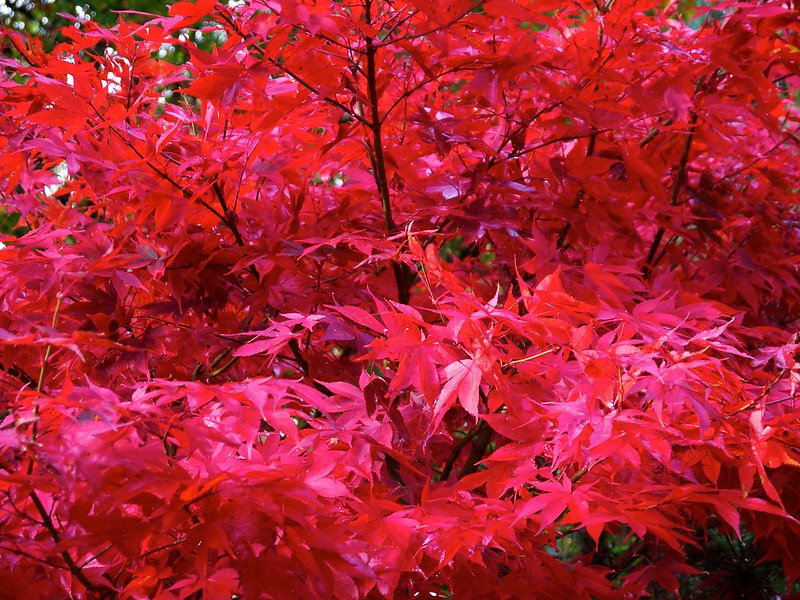
The snake-bark maple is a remarkably unique and beautiful tree that is well known for its striking bark that features patterned green, pink, and white serpentine stripes down the tree’s bark.
The snake-bark maple is characterized as a maple tree that is native to eastern Asia and North America.
The unique species of maple can commonly be found growing along streamlines and mountainous areas.
The snake-bark maple lands itself as a popular ornamental tree due to its unique appearance and coloring not only of its bark but also its distinctive three-leafed autumnal leaves.
RELATED: Tiny White Bugs on Plant & How to Identify and Get Rid of Them?
9. Weeping Cherry Tree

The weeping cherry tree, which is also known as the snow fountain dwarf weeping cherry, is often used for ornamental purposes as it is known for its stunning summer blossoms.
Though often associated with producing lush pink-white blossoms, the weeping cherry tree produces a variety of shades of pink.
The lighter pink variety can appear as white blossoms from a distance giving it a cotton-like appearance.
The weeping cherry trees are not only recognized for their beautiful blossoms but also their unique arched branches filled with cascading flowers.
Though a cherry tree, the fruit that the weeping cherry tree produces is inedible for humans but is much loved by birds.
10. American Aspen Tree

The American aspen tree, also known as the golden aspen, is recognized for its slender, smooth, and pale bark that is delicately marked by black fissures.
The trunk of the American aspen tree can reach heights of up to 25 meters making the appearance of the trunk more striking.
This unique tree isn’t only recognized for its long white smooth bark but also its beautiful golden leaves in the autumn season which creates a sea of gold.
The American aspen tree is native to the cooler mountainous regions of North America as it is considered to be a hardy plant with a strong trunk.
However, it is a popular ornamental tree and is widely distributed across America.
11. River Birch

The river birch tree is a unique species of birch that consists of a distinctive appearance.
The river birch’s bark is recognized for its peeling characteristics.
Its pale-gray, sometimes pink-hued bark can be found peeling and curling away in a scaly manner. The paper-like texture of the bark creates thick layers of scaled bark.
Scientifically known as the Betula nigra, the river birch is native to the eastern US. However, it is widely cultivated across America.
It can be found in several regions as it is considered to be a durable species that can withstand both hot and cold climates.
Given the name ‘river birch’, the river birch tree can be found growing along streams and floodplains, but it can grow successfully in higher and dryer land.
12. Himalayan Birch

The Himalayan birch, also known as the Betula utilis, is recognized for its strong yet delicate paper-like white bark.
Historically, the Himalayan birch was used as paper for writing scriptures and mantras due to its unique paper-like smooth bark.
The bark of the Himalayan birch can be seen to peel delicately from the trunk in broad strips.
Though recognized for peeling away delicate strips of bark, the Himalayan birch is considered to be an extremely hard and brittle tree and hence is commonly used for construction.
Though native to the Western Himalayas, the Himalayan birch can be found all across the world as it is commonly used for landscaping.
13. Silver Birch

The silver birch tree, scientifically known as Betula pendula is also known as the warty birch.
This tree is a versatile tree that can be found across Europe, the US, and Australia. Its hardy characteristic makes it able to survive in the warmer climates of Australia.
The silver birch tree is native to Europe and part of Asia, but it can most commonly be found across areas of Southern Europe.
Like the white birch, the silver birch features a thin white bark that peels away in layers at the trunk.
The silver birch is a big player in supporting a variety of animal species from birds to insects. It is also commonly cultivated for its use for firewood but also can be used for medicinal purposes.
14. Erman’s Birch
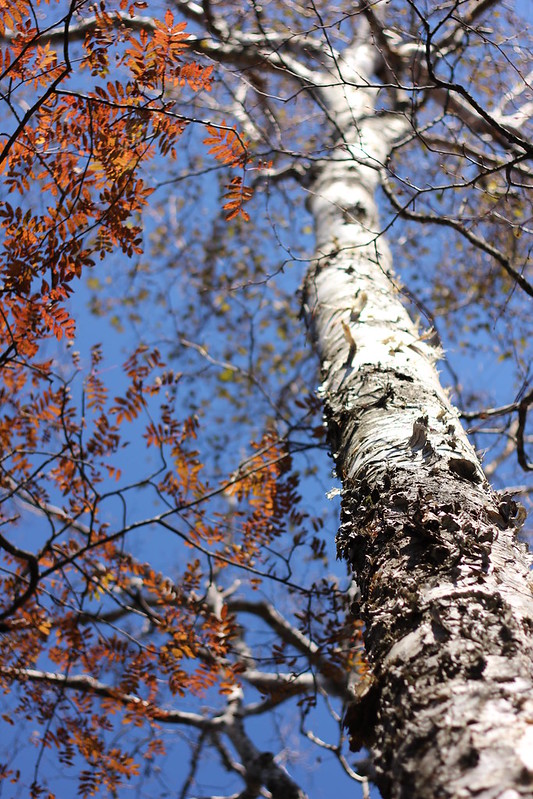
Scientifically known as Betula ermanii, Erman’s birch also known as gold birch is recognized for its unique cream-golden bark that can be found feeling away in delicate strips.
This unique birch tree is commonly cultivated for softwood and grafting as it is considered to be a sturdy and attractive plant.
Erman’s birch is also frequently used for ornamental purposes as it produces stunning red and golden leaves during the autumn but also thrives in a variety of soils.
15. White Birch

The white birch is recognized for its white paper-thin bark that peels off in layers.
They are widely cultivated for their unique appearance, but they are native to North America. The white birch is commonly known as a significant birch species that serve moose browsing.
It is also commonly used for its wood as it is often used for firewood or commercial purposes in paper production.
Summary
White trees evidently catch their eyes, and they are considerably desired in many regions not only for their distinctive appearance but also for their strength, beauty, and their produce.
Whether you’re thinking of growing a white tree for ornamental purposes or you’re looking to familiarize yourself with different white trees, you’ve come to the right place!
Editor’s Recommendation
The Golden Guide To Gold Trees: 17 Types Of Gold Trees
Nature Sure Is Beautiful! 28 Different Types Of American Trees
style> blockquote.wp-block-quote { margin: 20px 0px; padding: 20px; background: #95b164 !important; border-left: 5px solid #647840 !important; font-style: italic; font-weight: bold; } blockquote.wp-block-quote p { margin: 0; color: #FFFFFF; } blockquote.wp-block-quote a { color: #FFFFFF; text-decoration: underline; }






